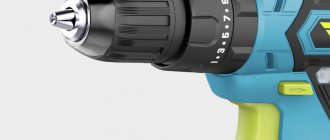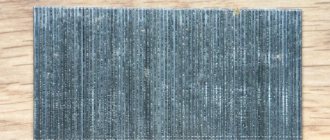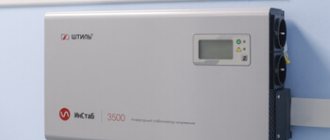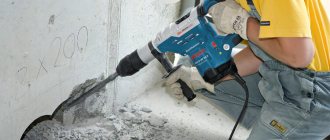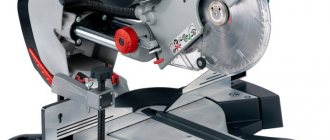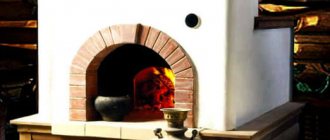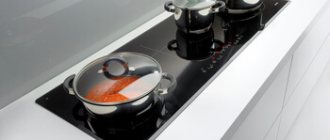If you are faced with choosing a device for metering electricity consumption, then we will try to unbiasedly answer the question - what are the best electricity meters for an apartment, cottage or garage in 2021 . We will describe in detail electric meters by model, their main technical characteristics, prices and what tariff accounting options are available.
Experts and authors of the article: Balashov S. A, Fillipov I. P
Summary table
of the top best electricity meters presented in our selection
| Single tariff for apartment | ||
| Name | Cost, rub | Note |
| Energy meter CE-101-R5.1 145M6 5(60) | 540 – 900 | The best single-tariff meter for an apartment |
| Energy meter TsE6803V 1 230V 3ph.4p. M7 P31 5(60) | 1600 – 1900 | 4 years warranty |
| Mercury 201.7 | 580 – 700 | service life more than 30 years |
| NEVA 306 1S0 230V 5(100) | 3340 – 4530 | LCD monitor with switching to counting mechanism and network parameters |
| Mercury 231 ART-01Ш | 2580 – 3150 | The best three-phase (380V) two-tariff meter for apartments and private houses |
| Multi-tariff for apartments | ||
| Name | Cost, rub | Note |
| Energy meter CE 102-M-S7-145 | 1400 – 2057 | Device with memory function |
| Energy meter CE 102M R5 145-J 5(60) | 1458 – 1596 | Infrared port, tariff differentiation button |
| Mercury 230ART-02-CN | 4180 – 4899 | Self-diagnosis function |
| PZIP TsE-2727AE4-SE4 | 4500 – 4830 | Switching tariffs by time |
| Energy meter CE 301 R33 145-JAZ 5(60) | 2663 – 3650 | Possibility of limiting electricity consumption |
| Outdoor for private houses and cottages | ||
| Name | Cost, rub | Note |
| LEMZ TsE-2726-SOLO-G05 | 820 – 1950 | Classic look, reverse stopper |
| Enron TOPAZ 103-5(60)1-ShR1E-O4 | 1300 | AIIS KUE function |
| Typeit NEVA MT 324 1.0 A OS 26 5(60) | 3034 – 3802 | Sealed housing. Ideal for placing on a pole in the garden |
| Mercury 231ART 01-Ш | 2580 – 3573 | The best three-phase (380V) two-tariff meter for an apartment, private house and cottage |
| ISKRA ME382-D2 10(100) | 25000 – 27700 | 8 tariffs, 12 seasonal and 12 weekly programs, 16 masks, 16 modes. SM/GPRS modem or M-Bus/DLMS/IDIS protocol. Foil screen |
| Iek CCE-3C1-3-01-3 | 1090 – 1229 | LED indication |
| For garage | ||
| Name | Cost, rub | Note |
| Cascade 101-MT | 543 – 2348 | There is a display backlight |
| NEVA MT 114 AS WF1P | 2600 – 2800 | |
| INCOTEX Mercury 230 AM-02 10(100) | 1900 – 2300 | Great solution for a garage with a lot of power tools |
| Mercury 231-AM-01sh | 1900 – 2200 | Able to work in -30 degrees |
| Meters with remote control | ||
| Name | Cost, rub | Note |
| Neva 103 1SO 5(60)A/230V | 650 – 800 | Switching electrical lines from the remote control |
| Mercury 201.2 | 800 – 1400 | Logs data into the event log |
| Mercury 200 02 | 1500 – 1900 | It is possible to bill electricity at set percentages |
| Energy meter CE-300 R-31 | 3300 – 3600 | |
| Vector 3-AM-01 | 2800 – 3000 | PLC modem |
| Mercury 231-AT | 2600 – 3200 | Extended Warranty |
| Induction | ||
| Name | Cost, rub | Note |
| LEM101 | 800 – 900 | |
| SO-505 | 900 – 1000 | Accurate and reliable. Smart choice at an affordable price |
| SO I4491M2-5 | 700 – 900 | |
| SO 51PK | 750 – 1300 | |
TOP – 30 Best electricity meters for apartments
Single tariff
Energy meter CE-101-R5.1 145M6 5(60) A
The manufacturer produces these electric meters in durable cases and only in light gray color. The rear panel has grooves for mounting the device on a DIN rail. The electronics of the device are protected from external influences of electromagnetic fields, which explains the high reading accuracy and reliability of the meter. Energomera CE has passed full certification for safety, quality and is included in the state register.
The front panel has an LCD display that displays all the basic data on the consumption and metering of electricity used and the status of the device
Specifications:
- Network type: single-phase
- Number of tariffs: 1
- Accuracy class: 1
- Operating principle: electronic
- Cost: 540 – 755 rub.
Energy meter TsE6803V 1 230V 3ph.4p. M7 P31 5(60) A
The device is designed for a current of 100 A , so it is perfect for large apartments with high electricity consumption . Accordingly, the device is placed in a heavy case made of durable plastic, the contact row consists of thick steel terminal holders. The electronics are protected from electromagnetic radiation from the inside by a foil screen. The dial is mechanical, there is an LED indication of operating modes. The manufacturer provides a 4-year warranty on this meter model.
Specifications:
- Network type: 3-phase
- Number of tariffs: 1
- Accuracy class: 1
- Operating principle: electromechanics
- Cost: 1500 – 1700 rubles
Mercury 201.7
Incotex company brings to your attention an excellent development of Mercury - single-phase model 201.7 . It is distinguished by its compact dimensions, durable plastic case, electronic functionality and mechanical indicator. The device weighs only 240 g , which greatly simplifies its installation in a hard-to-reach place on the electrical panel, which is already filled with many other elements. The front panel has a light indication that the permissible current in the network has been exceeded, and there is anti-reverse protection. is designed for 50 A. The manufacturer's warranty for this device is 2 years , but its declared service life is at least 30 years.
Specifications:
- Network type: single-phase
- Number of tariffs: 1
- Accuracy class: 1
- Operating principle: electromechanics
- Cost: 500 – 1030 rub.
- Disadvantages: little information about the state of the network
NEVA 306 1S0 230V 5(100) A
represents the NEVA 306 counter. On the front panel there is an LCD monitor with switching to the counting mechanism and network parameters . The device is resistant to network overloads. There is a dinrail mount on the back wall of the case.
Specifications:
- Network type: three-phase
- Number of tariffs: 1
- Accuracy class: 1
- Operating principle: electronics
- Cost: 2600 – 2823 rub.
- Disadvantages: none found
Mercury 231 ART-01Ш
The INCOTEX company offers the consumer a model of a three-phase single-tariff meter Mercury 231 - 5-60A, 380V. The ratio of the network current power - 50 A , with which this device can work, and the cost, we can say that this model is a rational solution for a large apartment .
Specifications:
- Network type: three-phase
- Number of tariffs: 2
- Accuracy class: 1
- Operating principle: electromechanical
- Cost: 2450 – 2800 rub.
- Disadvantages: none found
Multi-tariff (two-tariff and three-tariff)
Energy meter CE 102-M-S7-145
This model is a development with the support of our own Electrical Engineering Institute . But not only the CE model range, but also all the products of this concern are popular among consumers due to the optimal price/quality . Not all single-phase electricity meters costing up to 2,000 rubles operate on a network with a current of 60 A. This is a good solution for apartments with high electricity consumption.
On the front panel there is an LCD display and LED indication of the status of the network and the device , and tariff differentiation buttons . There is protection from external influences of electromagnetic radiation. The device is equipped with a memory for storing data.
Specifications:
- Network type: single-phase
- Number of tariffs: 4
- Accuracy class: 1
- Operating principle: electronic
- Cost: 1200 – 1899 rub.
Energy meter CE 102M R5 145-J 5(60) A
This model is designed for a single-phase network with a current of up to 50 A. The case is made of durable plastic and is protected from unauthorized access. The rear panel has grooves for easy installation of the device on a DIN rail. There is an LCD display on the front, as well as a tariff differentiation button . There is an LED indication of network status and event recording. Built-in memory for data archiving.
Specifications:
- Network type: single-phase
- Number of tariffs: 4
- Accuracy class: 1
- Operating principle: electronic
- Cost: 1300 – 1450 rubles
Mercury 230ART-02-CN
This model of three-phase electric meter can be considered the most famous, since the manufacturer Incotex supplies it to more than 30 countries . The device is made in a durable, heavy plastic case, reliably protected from the effects of electromagnetic radiation on the electronics from the network. In terms of functionality, it is similar to a computer center. The backlit LCD display displays all information about the network, device status and time zones, a data archive for all tariffs separately, and an event log. There is self-diagnosis, information can be viewed on the display in the form of error codes.
Specifications:
- Network type: single-phase
- Number of tariffs: 3
- Accuracy class: 1
- Operating principle: electronic
- Cost: 4500 – 5400 rubles
PZIP TsE-2727AE4-SE4
Two-tariff meters of this brand are produced by the St. Petersburg Electrotechnical Plant. This is a 3-phase, 2-tariff device , designed to operate in a network with a current of up to 100 A. Data for each tariff is recorded in the event log and can be viewed on the LCD display. The device has the functionality of automatically switching tariffs according to the set time.
Specifications:
- Network type: three-phase
- Number of tariffs: multi-tariff
- Accuracy class: 1
- Operating principle: electronic
- Cost: 4100 – 4500 rubles
Energy meter CE 301 R33 145-JAZ 5(60) A
A special feature of this model of 3-phase electricity meters is the ability to limit the consumed amount of electricity and total power. If the set values are exceeded, then the system will signal this. The display shows: network break, power surges, lack of power. All data is archived in the event log. Among the disadvantages, one can note the insufficient strength of the case, however, it is sealed, which is good for using the meter in outdoor conditions.
Specifications:
- Network type: three-phase
- Number of tariffs: 4
- Accuracy class: 1
- Operating principle: electronic
- Cost: up to 3200 – 3800 rubles
- Disadvantages: insufficient body strength
Types of multi-zone metering devices
All multi-zone devices are divided into two- and three-tariff.
- The first ones work due to the possibility of setting two modes: night and day. During the night time interval from 23:00 to 7:00, tariffing is carried out with the introduction of a 50% rate, while during the day it is a 100% payment.
- The latter work by setting three modes: night time, “peak” and “half-peak”. At night, a coefficient of 0.4 of the standard tariff is introduced, during “peak” hours (from 8:00 to 11:00 and from 20:00 to 22:00) a coefficient of 1.5 is applied, at the rest of the time (“half-peak” ) – this indicator is 1 (payment at the standard rate).
Outdoor electricity meters for private homes and cottages
LEMZ TsE-2726-SOLO-G05
The device is designed for outdoor operation in the temperature range from –15 to +40°C. The contact row is also located under a sealed removable cover. The device has a reverse stopper and protection against unauthorized access.
Specifications:
- Network type: single-phase
- Number of tariffs: 1
- Accuracy class: 1
- Operating principle: electromechanics
- Cost: 900 – 950 rub.
- Disadvantages: none found
Enron TOPAZ 103-5(60)1-ShR1E-O4
The Topaz two-tariff electricity meter is designed to operate in a network with a current of up to 50 A and the possibility of differentiated metering at three tariffs. The interface type has a special designation RS 485, which indicates the compatibility of its functionality with AIIS KUE (Automated Commercial Electricity Metering System) . The front instrument panel is hermetically sealed with a transparent plastic cover. There are grooves on the back of the housing for easy installation of the meter on a DIN rail.
Specifications:
- Network type: single-phase
- Number of tariffs: 2
- Accuracy class: 1
- Operating principle: electronic
- Cost: 1200 – 1300 rubles
- Disadvantages: fragile body
Typeit NEVA MT 324 1.0 A OS 26 5(60) A
The Taipit brand is a St. Petersburg concern with many production branches in the Russian Federation. Its products are also supplied abroad. Model MT-324-1A is a new development. The device is designed to operate in a single-phase network with a current of up to 50 A. The electronics are reliably protected from external electromagnetic influences and adverse weather conditions. This is an excellent solution for outdoor installation in a private home.
Specifications:
- Network type: single-phase
- Number of tariffs: 4
- Accuracy class: 1
- Operating principle: electronic
- Cost: 3229 – 3400 rub.
- Disadvantages: none found
Mercury 231ART 01-Ш
The best two-tariff meter is Mercury 231ART 01-Ш . It is characterized by high measurement accuracy. If a malfunction occurs, the meter system automatically starts a self-diagnosis mode , and from the error codes you can easily determine the cause of the failure and quickly restore functionality.
Specifications:
- Network type: three-phase
- Number of tariffs: 2
- Accuracy class: 1
- Operating principle: electronic
- Cost: 2450 – 2800 rub.
- Disadvantages: none found
ISKRA ME382-D2 10(100)A
The ISKRA ME382-D2 electricity meter is designed and manufactured in accordance with international standards ISO-9001 and ISO-14001 . The electric meter provides accounting for electricity parameters much better than required by the European standard IEC-62053-21.
Active energy is measured in 2 directions, reactive energy is measured in 2 directions plus 4 quadrants. The meter measures total energy and power, as well as instantaneous values of phase voltages, current, frequency and power factor. The functionality of the device includes recording the amounts of received/given energy and power.
The meter has the ability to use a tariff schedule to register active energy and maximum power ( 8 tariffs, 12 seasonal and 12 weekly programs, 16 masks, 16 modes ). The accumulated data will be transmitted over separate channels via SM/GPRS modem or M-Bus/DLMS/IDIS protocol.
This brand of meters is intended for both domestic and industrial use within the temperature range from –40°C to +70°C. To protect the device and ensure proper operation there is a foil screen and an emergency power contact breaker. The device is absolutely reliable, as it is made with protection against dust, water and dirt according to class IP54 . It is possible to install this meter outdoors. The ME382 is perfect for large homes with heavy use of electrical appliances.
Specifications:
- Network type: three-phase
- Number of tariffs: 8
- Accuracy class: 1
- Operating principle: electronic
- Cost: 25,000 – 27,700 rubles
- Disadvantages: complex functionality, high price
Iek CCE-3C1-3-01-3
Three-phase economical electric. The Star model counter has an analog metering scale and LED indication of operating modes. There are grooves on the back panel for mounting the device on a dinrail.
Specifications:
- Network type: three-phase
- Number of tariffs: 1
- Accuracy class: 1
- Operating principle: electromechanical
- Cost: 380 – 650 rub.
- Disadvantages: none found
How to choose the right one
The choice of an electric meter depends on the characteristics of the network operation:
- single-phase induction - suitable for low energy consumption, usually only for lighting and switching on low-power consumers;
- three-phase electronic - if you plan to use machines and a welding unit. Such a device, as a rule, must be connected via a transformer;
In the latter case, the owner has the opportunity to take into account consumption according to several tariff plans.
You should also consider the temperature range of the device based on operating conditions. It is important to correctly determine the current characteristics of the meter and the power of the machine when turned on. It also depends on the total power of the connected devices.
The best electric meters for a garage
Counter Cascade 101-MT
Which electric meter is best to install in the garage? First, let's look at single-phase meters. The 101-MT cascade is designed to operate in a single-phase network with a current of up to 60 A. This is good for using it in a garage, welding and other power tools are simultaneously
Specifications:
- Network type: 1-phase
- Number of tariffs: 2
- Accuracy class: 1
- Operating principle: electromechanics
- Cost: 560 – 800 rub.
- Disadvantages: there is not enough information about the network status
NEVA MT 114 AS WF1P
This model of single-phase electric meters is designed for installation in difficult conditions in terms of energy consumption. Although the device is designed for a current of 40 A, it is sufficiently protected from the effects of electromagnetic fields and is capable of operating in a temperature range from –10 to +50°C. These are exactly the conditions that can exist in garage conditions, for example, if the dryer is running or the garage is not heated in winter . Electricity consumption data is read through four separate tariff channels and entered into the archive. There is a display backlight.
Specifications:
- Network type: 1-phase
- Number of tariffs: 3
- Accuracy class: 1
- Operating principle: electronic
- Cost: 2600 – 2800 rubles
INCOTEX Mercury 230 AM-02 10(100) A
It is better to install a meter in the garage to work in a 3-phase network. INCOTEX Mercury 230 AM-02 10(100) A is a good solution for garage conditions where machines and a large number of power tools .
Specifications:
- Network type: 3-phase
- Number of tariffs: 1
- Accuracy class: 1
- Operating principle: electromechanical
- Cost: 1900 – 2300 rubles
- Disadvantages: mounting method with screws only
Mercury 231-AM-01sh
The Incotex concern confidently declares that their development - the Mercury 231-AM-01sh electric meter is perfect for garage conditions. The electronics of the device are reliably shielded from external electromagnetic fields and are capable of operating in the temperature range from –15 to 40°C . According to user observations, this counter copes with its task perfectly even at -30°C . The seven-digit mechanical counting mechanism works flawlessly in such conditions, compared to electronic displays. Installation is provided on DIN rail only.
Specifications:
- Network type: three-phase
- Number of tariffs: 1
- Accuracy class: 1
- Operating principle: electromechanical
- Cost: 1900 – 2200 rubles
- Disadvantages: none found
Advantages of multi-tariff devices compared to single-tariff devices
Electricity consumption in residential buildings often experiences significant daily changes. This is due to the fact that nighttime energy consumption will in any case be minimal compared to daytime for obvious reasons: everyone sleeps at night. In the morning, when everyone is getting ready for work, electricity consumption jumps again, and in the afternoon, when virtually everyone is at work, this figure drops again. Naturally, upon returning home in the evening, people begin to cook dinner, clean the house, watch TV, charge their gadgets - all this requires serious consumption of electricity. And all these moments inevitably lead to significant fluctuations, which is why neutral, “peak” and “half-peak” moments in the use of energy resources appear.
The advantages of multi-zone devices for metering consumed electricity lie precisely in the fact that these intervals can be controlled. The multi-tariff meter stands out against the background of single-tariff devices with the following winning points:
- The ability to connect three-phase household appliances - a standard single-phase electric meter may sometimes not be enough for devices such as, for example, an electric boiler for heating water (water heating boiler), electric stove, electrically driven appliances, etc.
- Possibility of preventing phase imbalance resulting from electrical overload. Single-tariff single-phase electricity meters do not have this function. Multi-tariff installations tend to connect those devices that do not function at low voltage.
- The ability to distribute the load evenly and rationally, selecting the appropriate phase for each device.
- Possibility of increasing power consumption if necessary.
- Reducing the rated current of the protection device located in the distribution board. This, in turn, increases the level of safety in using electricity.
- Preservation of indicators throughout the entire life of the device. Agree, it is very convenient if payment receipts are lost to have the data recorded in the device.
- Significant savings in electrical energy at night and during off-peak times. When consuming electricity at night, you will have the opportunity to pay for the services of the energy supply company in an amount reduced by 4 times compared to the daytime tariff. In "half-peak" zones you will be able to save a quarter of your daily budget.
Meters with remote control and automatic transmission of electricity values
An electricity meter with remote reading is an innovative development. When choosing among foreign manufacturers, you should make sure that the meter software is adapted to Russian power grids. We present 6 of the best such devices.
Neva 103 1SO 5(60)A/230V
The electric meter with remote control Neva 103 is designed for measuring active electrical energy in single-phase networks in private homes where electricity consumption is moderate. The case is completely sealed, made of durable plastic, shielded from electromagnetic fields. The meter is equipped with an electrical test output of active electricity, and the lines can be switched to DPU , the meter can be reset. Suitable for installation on dinrails only.
Specifications:
- Network type: 1-phase
- Number of tariffs: 1
- Accuracy class: 1
- Operating principle: electromechanics
- Cost: 650 – 800 rub.
- Disadvantages: there is not enough information about network parameters
Mercury 201.2 with remote control
If you need commercial metering of active electricity consumption for several consumers from one source, then Mercury 201 is what you need. The device automatically records accounting data in the event log . All actions with the meter’s functionality can be carried out remotely from the remote control, for example: switching percentage metering of energy consumption, turning off metering and leaving the metering visible. With one click of a button, you can completely turn off or turn on the electric meter.
Specifications:
- Network type: single-phase
- Number of tariffs: 1
- Accuracy class: 1
- Operating principle: electronic
- Price: 800 – 1400 rub.
- Disadvantages: none found
Mercury 200 02
Electric meter Mercury model 200 02 1-phase (two-phase) 2-tariff. All data is archived in the event log, and functionality can be controlled remotely. The meter is adapted to work with the ASKUE system . On the remote control you can switch electricity metering according to set percentages, and also reset the meter.
Specifications:
- Network type: single-phase
- Number of tariffs: 2
- Accuracy class: 1
- Operating principle: electronic
- Cost: 1500 – 1900 rubles
- Disadvantages: not designed for high current
Energy meter CE-300 R-31
Model CE-300 is designed to operate in a three-phase network with a current of 50 A. This is quite enough for a home with moderate energy consumption. All necessary data on the network and functionality of the device is displayed on the LCD display. There is a redundant LED indication. On the remote control you can switch electricity metering according to set percentages , and also reset the meter.
Specifications:
- Network type: 3-phase
- Number of tariffs: 1
- Accuracy class: 1
- Operating principle: electronic
- Cost: 3300 – 3600 rubles
- Disadvantages: overpriced
Vector 3-AM-01
This is one of the best electric meters, as evidenced by numerous reviews about it. is designed for metering electricity in a 380 V network with a current of 100 A. The meter has protection against unauthorized access to the functionality, reverse blocking, telemetry output, PLC modem . On the remote control you can remotely switch the percentage of energy consumption metering.
Specifications:
- Network type: three-phase
- Number of tariffs: 1
- Accuracy class: 1
- Operating principle: electronic
- Cost: 2800 – 3000 rubles
- Disadvantages: single tariff
Mercury 231-AT
If you have a 24-hour business in your garage, then Mercury 231-AT is the best two-tariff meter . is designed to operate in a 380 V with a current of up to 60 A. On the remote control you can switch electricity metering according to set percentages, and also reset the meter. In terms of price/quality , this is the most rational option for a large household in a private house.
Specifications:
- Network type: three-phase
- Number of tariffs: 2
- Accuracy class: 1
- Operating principle: electronic
- Cost: 2600 – 3200 rubles
Description of multi-tariff devices
Multi-tariff (multi-zone) installations are somewhat more complicated. The key point of such devices is that the energy consumed is distributed over specific time intervals. What is it for?
The thing is that energy sales companies set different tariffs for the use of electricity at different times of the day. There is daytime and there is nighttime. There is a “peak” time, when the majority of the region’s population returns from work and massively loads the electrical networks, and there is a “half-peak” time, when much less electricity is consumed.
In other words, the purchase of a multi-tariff device with the correct temporary consumption of electricity allows the owner to save money.
The best induction electricity meters
Induction (disk) electricity meters are a classic of Soviet times . But even today, in some conditions, they are excellent in terms of durability, accuracy and flawless performance. The reading principle is based on induction coils, rotating gears and a disk; hence the name. The big advantage of modern induction electricity meters is their low cost. We present the best of them:
LEM101
The device is designed to operate on a 220 V AC network. The mechanism is housed in a plastic case, protected from electromagnetic fields, including theft of electricity using permanent magnets.
Specifications:
- Network type: 1-phase
- Number of tariffs: 1
- Accuracy class: 2
- Working principle: induction
- Cost: 800 – 900 rubles
- Disadvantages: low measurement accuracy class
SO-505
The classic shape of the counter is noticeably combined with innovative ideas. This is high-strength plastic, a brass contact row under a transparent cover, and a sealed housing. A special locking ring protects the disc from reverse rotation .
Specifications:
- Network type: 1-phase
- Number of tariffs: 1
- Accuracy class: 2
- Working principle: induction
- Cost: 900 – 1000 rubles
- Disadvantages: none found
SO I4491M2-5
This disk meter is designed to operate in a two-wire circuit with a voltage of 220 V and a current of up to 40 A. The housing and terminal row are completely sealed, and there is reverse protection. This is an excellent solution for outdoor and garage conditions.
Specifications:
- Network type: 1-phase
- Number of tariffs: 1
- Accuracy class: 2
- Working principle: induction
- Cost: 700 – 900 rub.
- Disadvantages: none
SO 51PK
The main areas of use of these electricity meters are industrial enterprises, agriculture for simple settlements between the consumer and the supplier. This type of meters is most often used in information monitoring systems for electricity consumption.
Specifications:
- Network type: 1-phase
- Number of tariffs: 1
- Accuracy class: 2
- Working principle: induction
- Price: 750 – 1300 rub.
- Disadvantages: high price, for this price you can choose a more modern electronic version
Problem of choice
When it comes to installing a metering device in an apartment, some users are perplexed. Which one to choose: single-tariff or multi-tariff meter? What is the difference? Which one is considered optimal and for which networks is it suitable? All these questions seem too complicated at first. And to answer them, you need to understand the fundamental essence of these devices and make some preliminary calculations.
Which electricity meters are the best, most reliable and inexpensive?
The best single-tariff inexpensive meter for an apartment Energomera CE-101-R5.1 145M6 5(60) A
In terms of cost and functionality, the rating of the best electric meters is headed by Energomera SE-101 . It is considered the best in its class for an apartment, small private house or cottage, with installation on the street. In addition, for a cost of 755 rubles , a service life of 30 years means a lot for a simple meter.
Show reviews
Mercury 230ART-02-CN
This is the most popular model of a three-phase, three-tariff electric meter for an apartment in terms of advanced functionality and at the same time a relatively low cost of 4,500 rubles. A durable housing, a backlit LCD display, protection from electromagnetic fields, an archive of accounting data, self-diagnosis - all these advantages are combined in one device.
Show reviews
An excellent inexpensive meter for a private home Incotex Mercury 231ART 01-Ш
If you need a meter with full functionality for a garage or a large cottage with high electricity consumption, which operates in a wide temperature range, is protected from adverse external influences, but within the price range of 2450 - 2800 rubles , then Mercury 231ART 01 is the most rational option.
Inexpensive meter with remote control (DPU) Inotex Mercury 200 02
Agree that you can only buy a multi-tariff electricity meter for 2000 rubles that is used. And where is the guarantee that in the near future you will not have to incur new expenses for another meter to replace a failed cheap purchase. But, if you have a limited family budget , but you need multi-tariff metering , then prepare from 1,500 rubles and buy a new Inotex Mercury 200 02 electric meter.
Show reviews
Excellent garage meter Mercury 231-AM-01sh
Single-tariff three-phase meter Mercury 231-AM-01 for 1900 rubles, this is the best choice for garage conditions. The electronics of the device are reliably shielded from external electromagnetic fields and are capable of operating in the temperature range from –30 to +40°C . For the street, this is also a good solution.
The best inexpensive induction meter CO 505
Do you want to buy a high-quality electric meter under 1000 rubles ? There is one - CO 505. Just don’t be scared by its “communist” appearance, after all, this is a modern device made using innovative technologies. Reliable, durable and inexpensive.
Characteristic features of single-tariff devices
Single-tariff devices read information about the consumed amount of electricity consumed at a single established tariff. It “winds up” kilowatt after kilowatt at a clearly established fixed rate for each of them, without switching from one built-in meter to another.
The very principle of calculating energy consumption in this regard is similar to the good old induction meters. Unless they worked due to magnetic fluxes and an aluminum disk inside the device, and electronic models reflect information directly on the indicator board.
But their similarity lies in the fact that every day the user consumes electricity and knows that at the time of paying for the services of the energy sales company, he will simply need to multiply the “inflated footage” of a kilowatt by a specific tariff established within the framework of the state pricing policy for this resource.
Design features
Different types of meters differ in design. The mechanical device consists of two coils: one is current, and the second is supplied with voltage. Inside them there is a metal disk mounted in sliding bearings. A worm pair is mounted on its axis, which is connected to a mechanical counter. When the device operates, an electromagnetic field arises, which causes the disk to rotate, due to which the amount of electricity consumed is calculated.
In electronic devices there is no mechanical part at all. These devices convert analog signals into digital ones. For this purpose, special pulse sensors are used, which are connected to electricity using a transformer. The signal is sent to the microcontroller, which allows you to calculate the energy consumed. This data is displayed on a digital display. Such devices have a high accuracy class and allow the accumulation and transmission of information through special communication channels.
Three-phase meters have a similar device. The most popular devices are electronic ones. Some models support single-phase metering. They are reliable, integrate into automated accounting systems, and are small in size.
Why do you need an electric meter?
Electricity is not a free resource that every person needs in the modern world. Electricity consumption is strictly controlled by management companies. In case of prolonged non-payment, office representatives have the right to disconnect subscribers from the general network. Control is carried out using special devices.
The equipment is installed in every apartment, house, institution and production facilities. Due to significantly different energy consumption and differences in the design of engineering systems, manufacturers offer several types of electricity meters. This becomes the reason for the actualization of an important issue for the consumer: how to choose the right electric meter.
INCOTEX Mercury 206 RN 5(60) A
The Mercury 206 meter maintains multi-tariff accounting, measures network parameters and stores the received information. Additionally, the device generates a line of events and provides information to the centers of automated accounting systems. The meter can only be installed in enclosed spaces (not outdoors); high air humidity is not permissible.
The energy is taken into account from the moment the readings are reset, for the last 180 days and 4 years for the last reporting period. The rater has the most detailed settings. The power profile averaging time is 30 minutes. Fixing of all parameters with transfer is available.
Advantages:
- the event log;
- convenient external power supply;
- wireless interfaces;
- presence of a pulse type output, built-in relay;
- precise filling;
- LCD indication when the network is disconnected.
Flaws:
- all the advantages are valid if the device body is properly fixed - invite a specialist.
Installing the meter in the box
The first step is to install the box. The box is attached to the wall at the entrance to the garage. For this, dowels are used that are inserted into the wall.
The height of the box from the floor level is from 0.8 to 1.7 m to ensure ease of reading readings.
Recommended installation height for the meter
After installing the box, the meter itself is attached. The metering device is installed, depending on the design features, using a DIN rail or three screws. The last method is typical for outdated models. DIN rail is used in new types of devices.
Next, additional devices are installed - input machines, control units, etc. Additional equipment can be mounted separately or on the same DIN rail with the electric meter.
Among the shortcomings
Some models of electricity meters may have their drawbacks. These include:
- The blinking does not coincide with the clicks, which will mislead the user.
- Problems with telemetry.
- Poor build quality.
- Display without backlight.
- A short period of time for verification.
- Poor performance at low temperatures.
- High price.
- Lack of protection from moisture.
Yes, for some minor nuances do not matter much, but still, it is better to study the subject from all sides.
INCOTEX Mercury 200.02 (2 tariffs) 5(60) A
Ideal choice for meter replacement. INCOTEX Mercury 200.02 devices are used for multi-tariff metering and measuring the parameters of two-wire networks with alternating current. The information is recorded and stored, transmitted to ASKUE data collection centers.
Installation - strictly indoors, in a panel or cabinet. Accounting, storage, measurement, data output to LCD, transmission via interfaces - automated operations. Data recording indicating the amount to be paid is done for each tariff separately. You can program the tariff, create monthly schedules taking into account weekends and working days. Each month will be programmed on individual schedules.
Advantages:
- accurate instant measurements;
- multifunctional pulse output;
- absence of magnetically sensitive elements;
- event logging;
- the presence of an auto-self-diagnosis system with an error indicator;
- displaying information on the LCD even when the power is off;
- compact dimensions.
Flaws:
- the price is above average.
How to connect a meter
At the next stage, the meter is connected. To do this, you must first turn off the current supply so that the connection is carried out in compliance with safety measures. Let's consider possible connection diagrams, depending on the type of meter.
Single phase
Below is a typical connection diagram for a single-phase meter:
In the diagram above, the phase wire connected through the circuit breaker is indicated in red, and the neutral wire is indicated in blue.
Three-phase
A three-phase device can provide direct and transformer connection.
When connecting directly, the following scheme is used:
Here it is also not difficult to understand the location of the contacts for each of the phases and the neutral wire.
One of the possible transformer connection schemes:
The device must be connected according to the diagram shown on the terminal box cover or in the device passport. Otherwise, it can be found on the Internet using the meter model.
